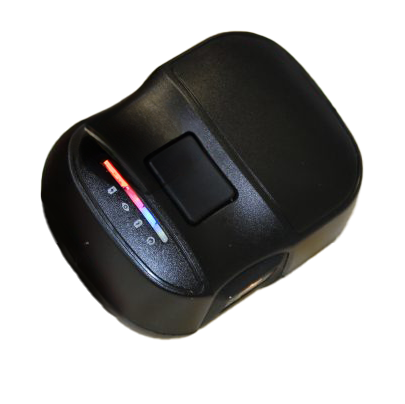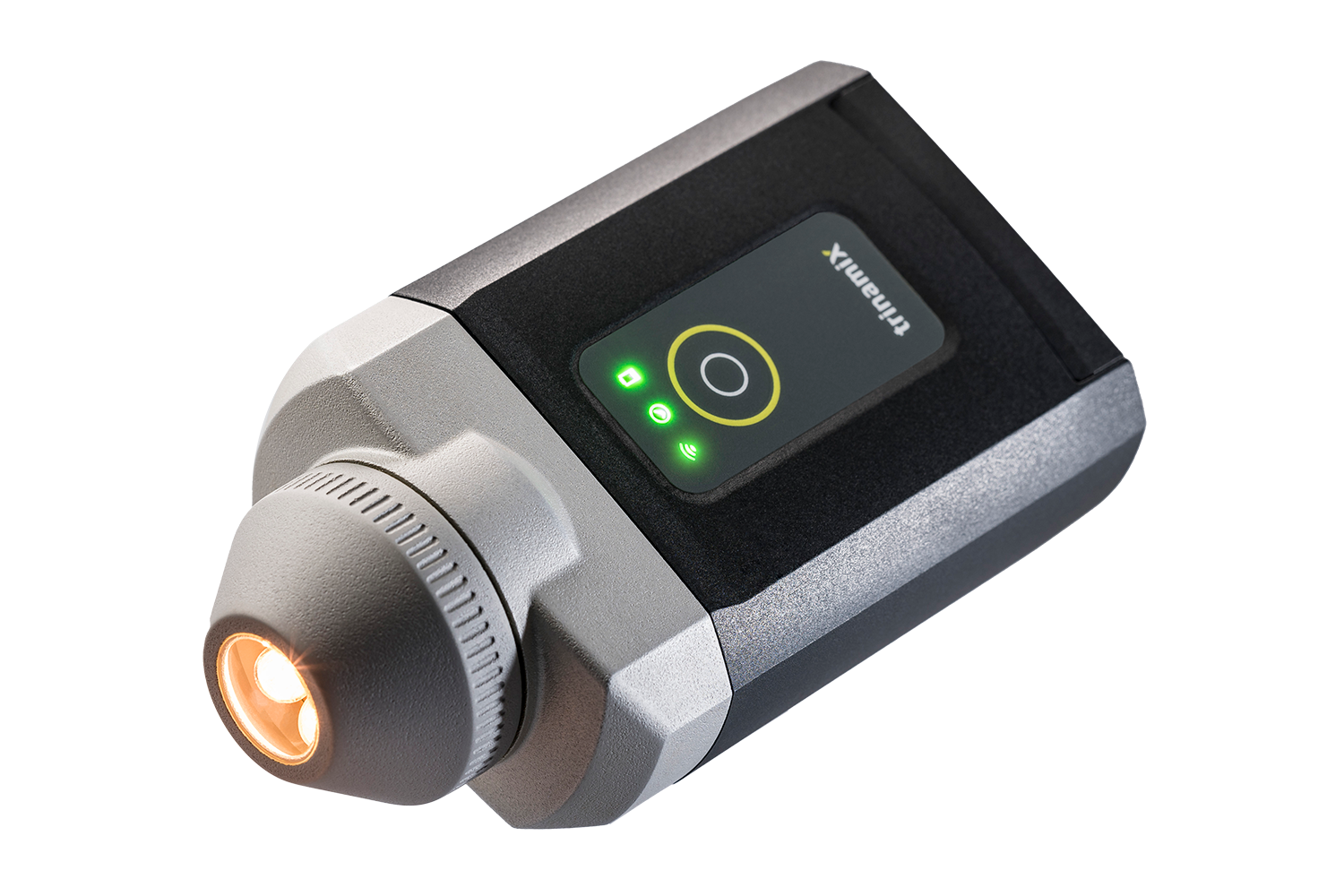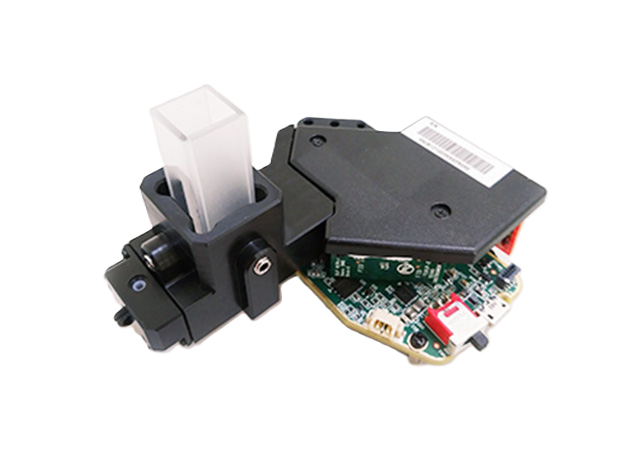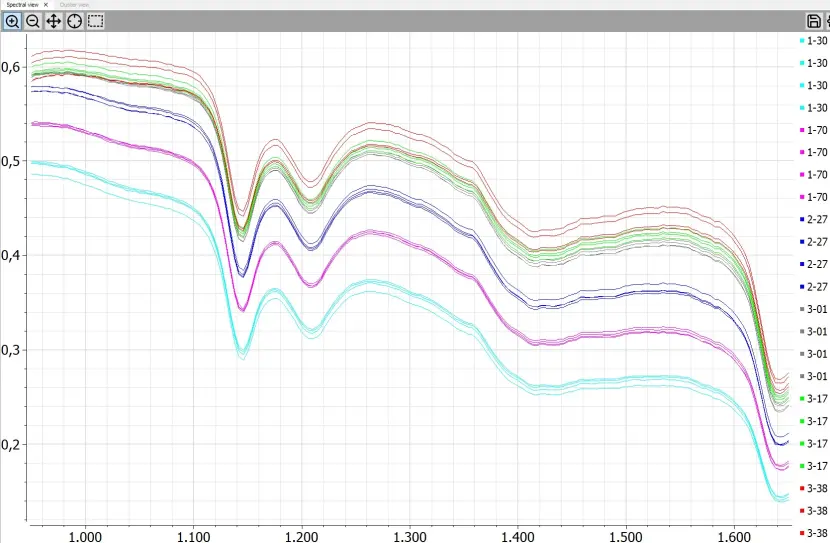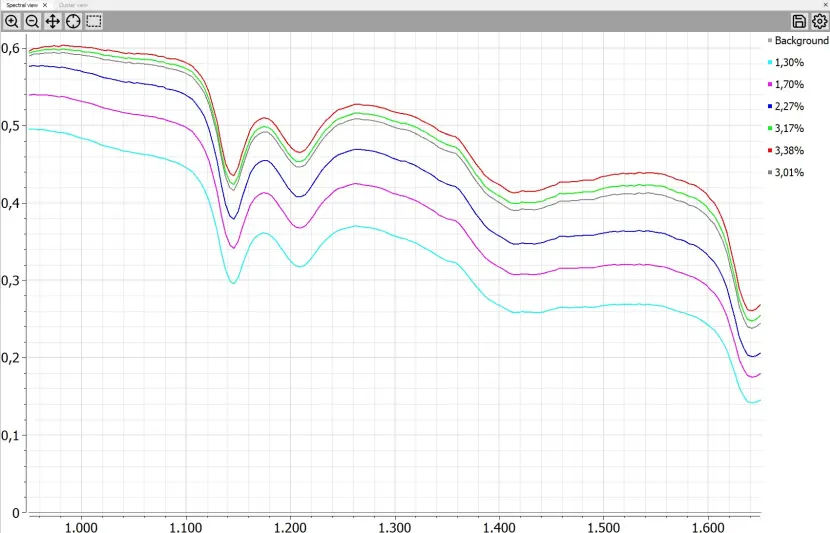NIR: In 3 steps from the technical
Feasibility for an industrial solution
Finding perfect technical solutions for complex problems is often time-consuming and expensive. And its success is uncertain. This article shows you how to find your complex, tailor-made solution in 3 steps. You start with an inexpensive, immediately available NIR spectrometer to check the basic feasibility within minutes.
Near-infrared spectroscopy is an established technology for the rapid, non-contact and non-destructive determination of differences in various substances. But is it really the right technology for your problem?
Using a specific customer example from the plastics industry, this article shows how to take big steps forward quickly - and initially without major investment.
The concept at a glance:
Step 1: Check basic feasibility - quickly & with a low investment
What is NIR suitable for?
NIR is used in the plastics industry to determine differences or identify unknown materials. Common applications are:
- Incoming goods inspection, e.g. for compounders
- Determination of batch fluctuations, e.g. in plastic injection molding
- Identifying unknown plastics, e.g. in recycling
- Testing the NIR detectability of new plastics, e.g. at masterbatch manufacturers
So far so basically clear. But what about your specific problem?
- Can the powders in the incoming goods department really be kept apart?
- Aren’t the fluctuations in the batches far too small to be reliably detected?
- When is a plastic too dark for fast and safe sorting in recycling?
- How can I prove NIR detectability for each delivery?
Is NIR suitable for setting up a measurement sensor system to monitor a dosing system?
The basic procedure is shown below using the example of a defective dosing system for TiO2. The dosing system had a defect that was not recognized for days because there were no suitable test methods. The crucial question was therefore first: Could the customer have detected the error with the help of NIR?
- Left image: The variance of the individual spectra overlap in the red, green and gray cases. Can these samples be distinguished?
- Center image: The representation in average spectra shows that the 3 cases mentioned above can probably be separated.
- Figure right: However, the prepared cluster display shows that the samples with 3.01% and 3.17% cannot be reliably distinguished using the standard analysis application
The cluster representation thus clearly shows that a difference of 0.4% can be reliably resolved; a difference of 0.15% can no longer be resolved. The faulty process was only stopped when the difference to the target value (3.0%) was 1.7%. NIR would have reliably detected a deviation from 0.4%.
This basic statement could be made within minutes with the help of the available handheld device and the appropriate software. The feasibility was thus proven.
Step 2: Installation in a prototype - semi-automated
Once the basic feasibility has been clarified, you keep the hardware and use our runtime environment. Using an industrial protocol, they can control, trigger and read out the fist-sized NIR spectrometer. We can also individualize the algorithm.
This allows them to build a prototype of their solution and (partially) automate the process. However, it should be noted that the Solid Scanner is not designed for 24/7 operation under industrial conditions.
All in all, you can quickly build a functioning prototype of your solution with only a small amount of individual (development) costs.
Step 3: Transfer to an industrial solution
They now know their exact requirements. This means we can get straight into a joint development project to develop the solution that solves your problem. The runtime environment can be adopted and supplemented so that we can also build on what already exists in the third step and therefore save the budget.
Much of the usual uncertainty associated with such projects is avoided.


